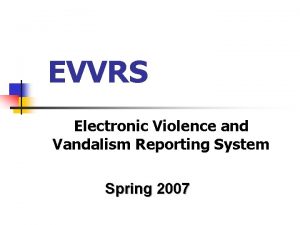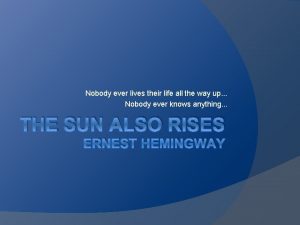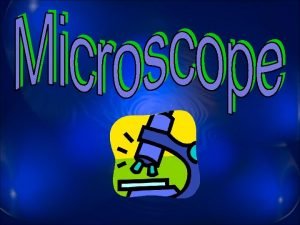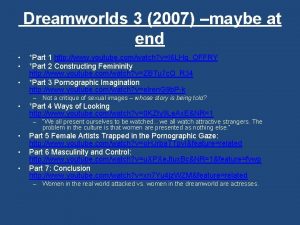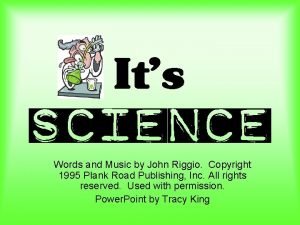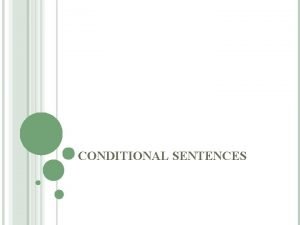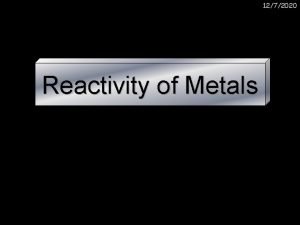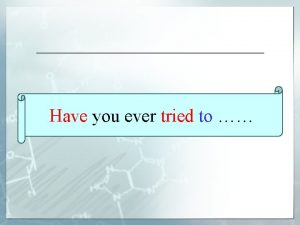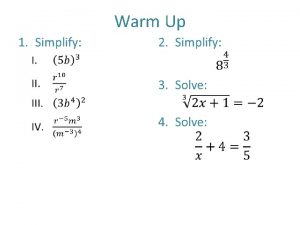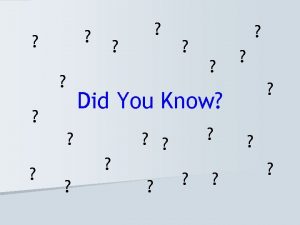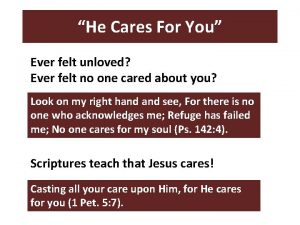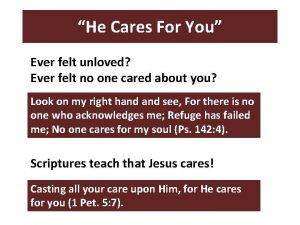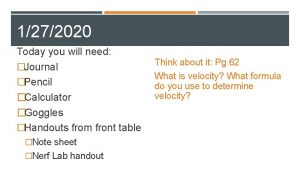Homeroom Warm Up 1272020 Did you ever take





















- Slides: 21

Homeroom Warm Up 1/27/2020 Did you ever take up for someone or has someone ever taken up for you? Write about what happened.

Science Warm Up 1/27/2020 Diagrams of plant cell division are shown out of order below. What is the correct sequence of plant cell division? In addition be sure to name each stage. A. 3, 2, 5, 1, 4 B. 4, 3, 2, 1, 5 C. 3, 4, 5, 1, 2 D. 5, 1, 2, 4, 3

Take a look at the picture below and complete the following sentences with your own responses 1. This makes me think of…. 2. I wonder…. 3. I have some questions…. 4. This makes me want to….

Sexual vs. Asexual Reproduction Compare and contrast the fundamental features of sexual and asexual reproduction. Objective I can identify and compare the processes of sexual and asexual reproduction.

Homework Textbook pages 282 -289 due this Friday

Reproduction is necessary for the continuation of every species. Every organism alive today comes from a long line of ancestors who reproduced successfully every generation. Reproduction is the transfer of genetic information from one generation to the next. It can occur with mixing of genes from two individuals (sexual reproduction). It can occur with the transfer of genes from one individual to the next generation (asexual reproduction). The ability to reproduce defines living things.

Sexual Reproduction A type of reproduction in which the genetic materials from two different cells combine, producing an offspring The cells that combine are called sex cells (gametes) Female Male – egg – sperm Fertilization: an egg cell and a sperm cell join together A new cell is formed and is called a zygote

Advantages: Sexual Reproduction Diverse offspring: genetic variation among offspring Half of the DNA comes from mom Half of the DNA comes from dad Due to genetic variation, individuals within a population have slight differences Plants Traits – resist diseases can develop to resist harsh environments that allows an organism survive

Advantages: Sexual Reproduction Selective Breeding Used to develop many types of plants and animals that have desirable traits Agriculture/Farming: better plants, larger animals Desirable pets

Disadvantages: Sexual Reproduction Time and Energy Organisms have to grow and develop until they are old enough to produce sex cells Search and find a mate Searching can expose individuals to predators, diseases, or harsh environmental conditions

Examples: Sexual Reproduction

Asexual Reproduction One parent: organism produces offspring without fertilization Uniform offspring: Because offspring inherit all of their DNA from one parent, they are genetically identical to each other and to their parent

Binary Fission: Asexual Reproduction Fission: Cell division in prokaryotes that forms two genetically identical cells DNA is copied The cell begins to grow longer, pulling the two copies apart The cell membrane pinches inward in the middle of the cell Cell splits to form two new uniform, identical offspring Examples: bacteria, Ecoli, pond critters

Budding: Asexual Reproduction Budding: a new organism grows by mitosis and cell division on the body of its parent The bud, or offspring is identical to the parent The bud, when large enough, can break off of the parent and live on its own Offspring may remain attached and form a colony Examples: Yeast, Hydra, cactus

Regeneration: Asexual Reproduction Regeneration: occurs when an offspring grows from a piece of its parent. Producing new organisms: Sea Stars Sea urchins, sea cucumber, sponges, and planarians Producing new body parts: Gecko

Vegetative Propagation: Asexual Vegetative Propagation: uniform offspring grow from a part of a parent plant Parent plants sends out runners Where the runner touches the ground, roots can grow A new plant is produced even if the runner is broken apart Each new plant is uniform and identical to the parent. Examples: strawberries, potatoes, ivy, crabgrass

Advantages: Asexual Reproduction Enables organisms to reproduce without a mate No wasted time and energy Enables some organisms to rapidly reproduce a large number of uniform offspring

Disadvantages: Asexual Reproduction Because their offspring are identical, there is no genetic variation that can give an organism a better chance for survival Example: If a weed killer can kill the parent, it will also kill the offspring A whole species can be wiped out from a disease Dangerous mutations in DNA – if the parent has the mutation in their DNA, the offspring will have it too.

Examples: Examples Asexual Reproduction

Activity: Create a creature that reproduces asexually. Draw the creature Describe how the creature reproduces asexually Describe 1 advantage of reproducing this way Describe 1 disadvantage of reproducing this way Name your creature

Science Closure 1/27/2020 The diagrams represent the way that three different organisms reproduce. Which of these classifies the reproductive method of all the organisms shown above? A segmentation B budding C asexual reproduction D sexual reproduction
 Ssds nj homeroom
Ssds nj homeroom West cabarrus high school
West cabarrus high school Homeroom expectations
Homeroom expectations Homeroom expectations
Homeroom expectations Homeroom.state.nj.us
Homeroom.state.nj.us Ever ancient ever new
Ever ancient ever new Clarified it
Clarified it Have you ever looked
Have you ever looked Ever tried ever failed no matter
Ever tried ever failed no matter Have you ever wondered questions
Have you ever wondered questions Did you ever think
Did you ever think Did you ever think
Did you ever think Have you ever met a famous person?
Have you ever met a famous person? Did you ever wonder
Did you ever wonder Did you ever have to finally decide
Did you ever have to finally decide Did you go or did you went
Did you go or did you went Take a bus or take a train
Take a bus or take a train When you take something that doesn't belong to you
When you take something that doesn't belong to you 5 apples in a basket riddle
5 apples in a basket riddle 10 examples of zero conditional sentences
10 examples of zero conditional sentences Finish these sentences
Finish these sentences You take $100 you had kept
You take $100 you had kept




